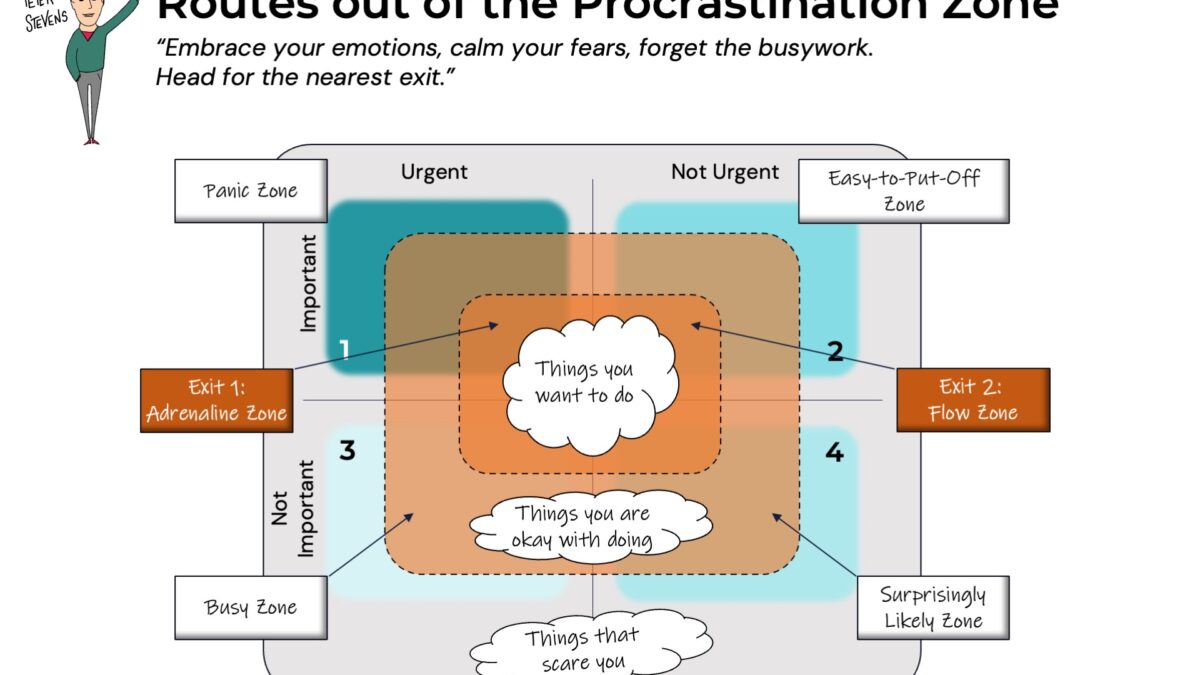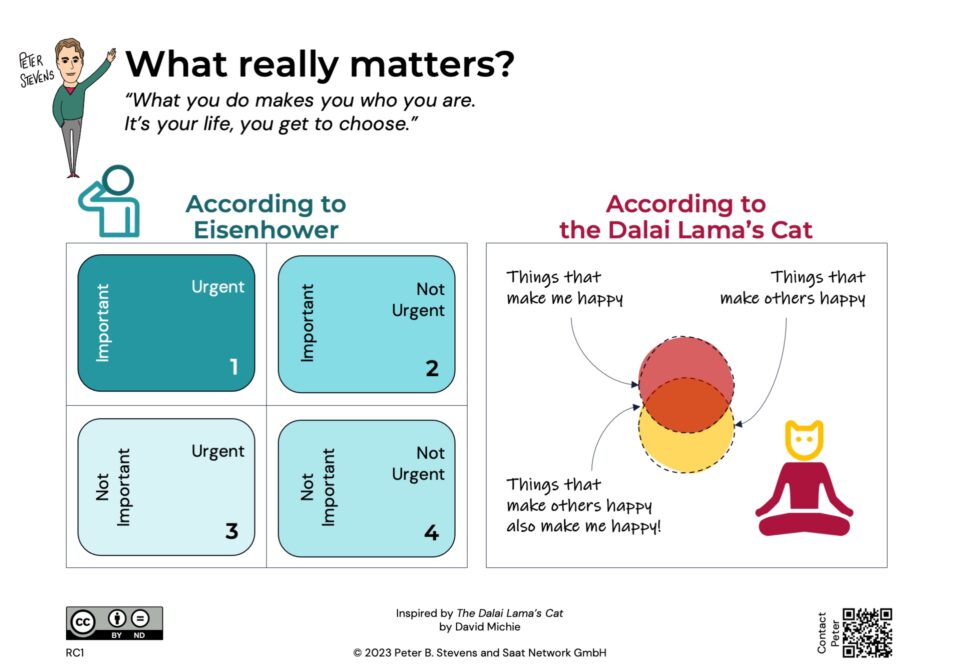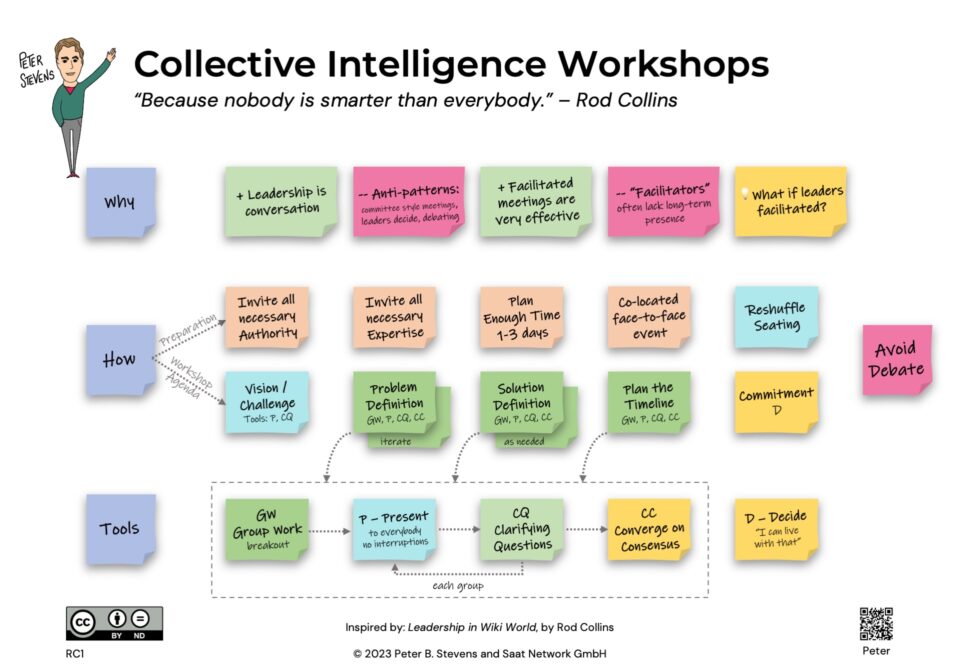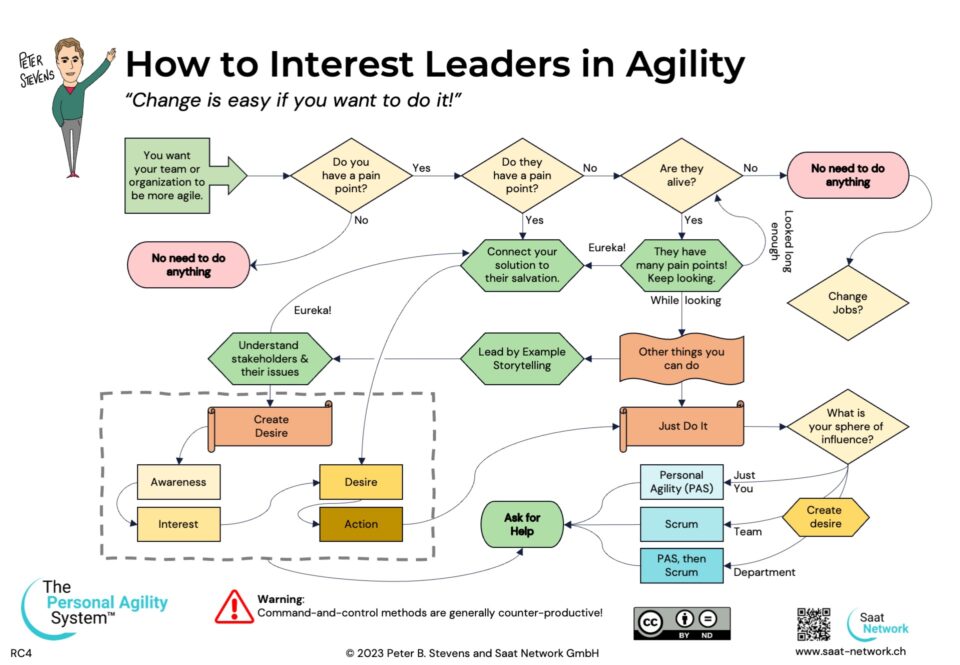
Backlog Refinement: Eight Traps to Avoid
05-10-2023
Leadership Development Program with Personal Agility
18-10-2023“You’re navigating through another dimension, whose axes are not only labeled with urgent and important but are overlaid with desires and fears; a voyage through a perplexing realm where deadlines loom and aspirations flicker. There’s a signpost up ahead – your next exit? How do you leave… the Procrastination Zone?”
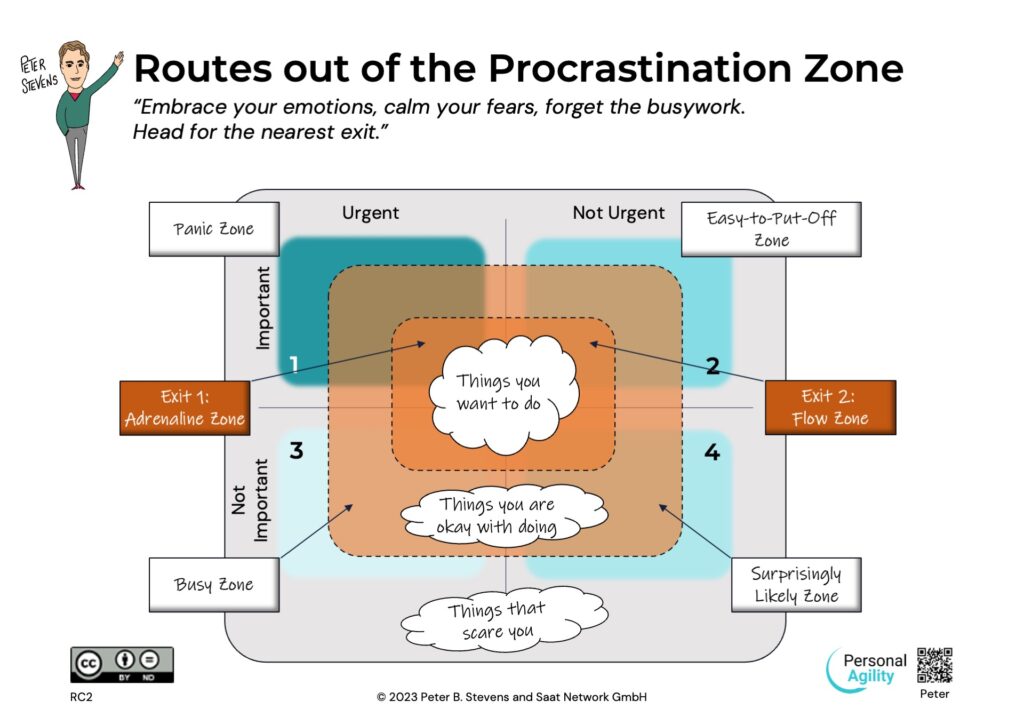
You have all seen the Eisenhower method of organizing work. Categorize and prioritize your tasks in four groups based on urgency and importance:
- Urgent and important
- Important but not urgent
- Not important but urgent
- Not important and not urgent.
Procrastination is when you know what to do, but you don’t do it. Alas Eisenhower doesn’t really help.
First, we all have too much to do. Urgent things consume your time and energy before you get to the merely important.
Second, as human beings, we are inherently emotional creatures. Our desires don’t always align with our priorities. Sometimes we are afraid of the possible consequences. This emotional element is where procrastination takes root.
Let’s explore how these task categories relate to procrastination.
The Panic Zone
Important, urgent tasks often have a deadline, which triggers a surge of adrenaline that propels us into action. That can be a good thing if the danger gets you moving. But if fear dominates or the trigger comes too late, it can be paralyzing.
The Too-Easy-To-Avoid Zone
Important but not urgent tasks have no deadline, so panic doesn’t set in. They can be deceptively easy to postpone. Other tasks appear more important.
The Busy Zone and Surprisingly Likely Zone
Here is where you fill your time while procrastinating. This can be a dark place because you can’t enjoy things that normally would make you happy.
Escaping the Procrastination Zone
It’s all about attitude. To break free of procrastination, just acknowledge your emotions and fears. Sometimes, that’s enough. Remembering why it’s important can help you move towards an exit.
Exit One: The Adrenaline Zone
The first exit, the adrenaline zone, matches deadlines with desire. If you’re not reacting to the impending doom, get some rest first. Find something small to start with. If the deadline is far off, head for the Flow Zone.
Exit Two: The Flow Zone
Create urgency for tasks with distant deadlines by creating intermediate deadlines, with help from a study buddy. Create a situation where it is easy to work on your important tasks.
You can escape the procrastination zone! Remember to be nice to yourself. You are always giving your best, even when it’s hard. The way out begins with acknowledging your emotions, confronting your fears, and identifying the nearest exits – the adrenaline zone or the flow zone – to boost your confidence and get moving. You can do it!

